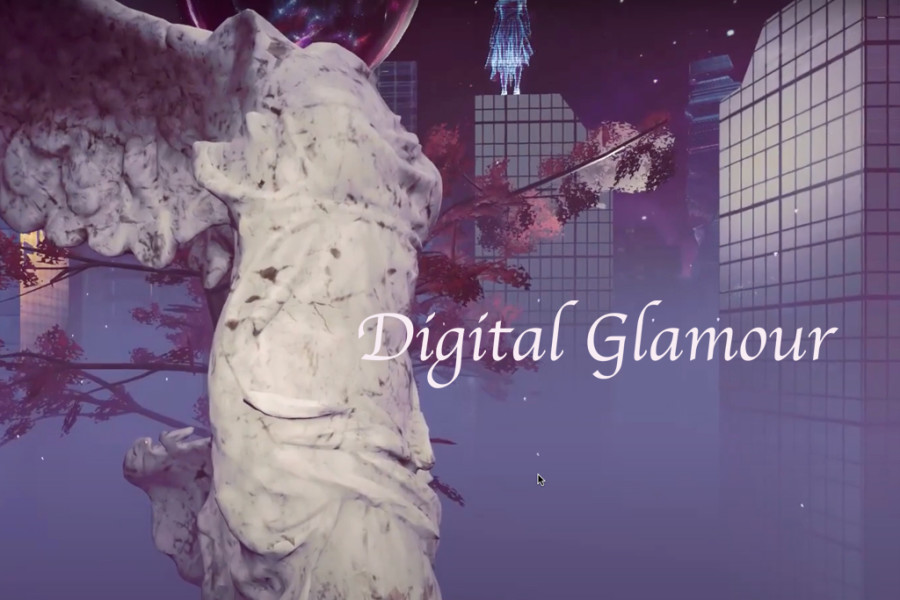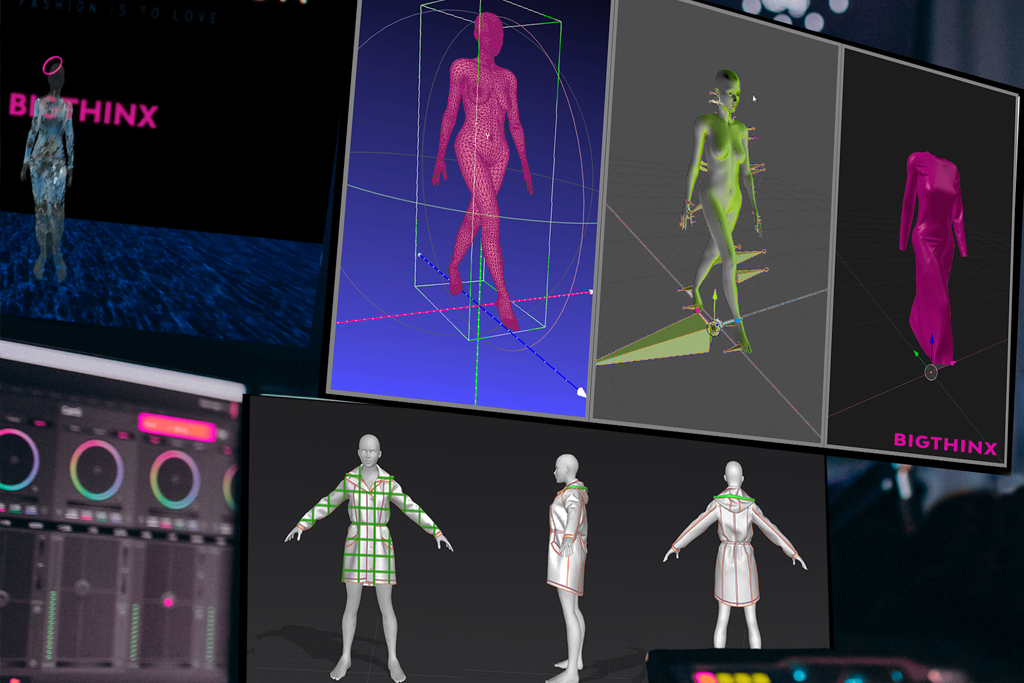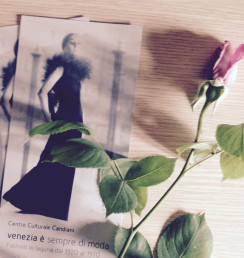Digital Glamour: when fashion opens up new worlds

Today what I am really grateful for is the existence of Zoom, but also Google Meet, Skype, MS Teams,… and all the free platforms that allow conference calls and video chats. Thank you!
Are you wondering why? We, the generation of Digital Natives,[Note 1] are used to taking the communication possibilities provided by Information & Communication Technologies for granted, but in reality they are a great achievement and a few weeks ago we realised this. Raise your hand if you didn’t feel a sense of disorientation when you experienced the Google Down on 14th December 2020. I was on the phone with a lecturer I’ve been working with for a long time and I couldn’t share the Google Doc we need to discuss together… I blamed it on bad luck, on the Internet connection, on my faithful MAC (to which I officially and sincerely apologise), on astral connections, on everything, because it simply wasn’t possible for Google to be to blame!
Digital as the fifth element,
in addition to air, water, earth and fire
Digital is now part of our environment as the fourth element, in addition to air, water, earth and fire. We are constantly living in a dimension where the real domain and virtual one (i.e. digital domain) coexist seamlessly and this fact is beautiful and exciting! In the same way the interview I conducted on 16th January for Chic Words with two professionals in the Virtual Fashion sector was really exciting. So thanks again to Zoom, who allowed me, without leaving my desk, to welcome two distinguished guests from India to my studio! (A wonderful country that I hope to visit one day). And thanks to my special guests!
But let’s start in order, here is my new interview!
Virtual Fashion
Last year, the entire fashion ecosystem had to rethink its mechanisms and relationship dynamics. Fashion shows were blocked, showrooms and shops closed, as well as large events in attendance. As a result, the creativity of companies and professionals in the fashion system has had to invent and open up new ways and means of meeting consumers, collaborators and potential business partners. The transition to the digital world was inevitable, together with a renewed focus on wellbeing and respect for people and the environment.
Almost all the activities that make up our daily routine, both personal and professional, have undergone a Digital Sprint, i.e. a rapid transformation from analogue to digital, in other words they have become activities to be carried out online. And of course this is also true for fashion shopping.
However, this scenario has also brought new opportunities, which were previously looked at with suspicion by brands and fashion houses (but which Chic Words had been passionate about for some time). I am talking about Virtual Fashion: the Digital Transformation that concerns actors, experiences, contexts and activities linked to the fashion sector.
To learn more about the New World of Virtual Fashion, I interviewed for you Chandralika Hazarika, MD, co-founder of Bigthinx and Shivang Desai, CEO, CTO of Bigthinx.

Bigthinx
Maddalena Mometti: Why did you decide to create Bigthinx? How did the idea come to your mind?
Chandralika Hazarika / Shivang Desai: Bigthinx is an AI company providing size, fit, and visualization solutions for fashion and retail.
Both of us founders are entrepreneurs at heart and we focus on solving problems that we encounter, too. The current online shopping system encourages unsustainable behavior, such as buying several sizes of the same dress and then returning the sizes that do not fit your body.
So, we started to think about how we could overcome these problems.
Let us tell you some data we collected:
- $309 Billion is the amount of lost sales in 2019 caused by e-commerce returns cost – only for the US economy; globally this figure rises to trillions of dollars;
- 30%-50% of all apparel items bought online are returned; some countries even have a return rate up to 80%;
- 84% of all clothing returns are destroyed through land-filling or incineration.
When we realized how big impact on the environment these data mean, we decided to build a product that could target it and we chose to use AI to differentiate our products and address certain inadequacies in the traditional way of doing business in the fashion industry. This is how Bigthinx began. Bigthinx’s AI solutions specializes in Artificial Intelligence for fashion and retail, using human body AI to significantly reduce apparel waste.
Maddalena Mometti: I am very curious. What products/services do you offer to fashion houses, fashion designers and consumers?
Chandralika Hazarika / Shivang Desai: Bigthinx has two main product lines.
- Bigthinx’s LYFSIZE AI software carries out a 3D body scan using only two photos from a smartphone and calculates 44 precise body measurements and body composition ratios with over 98% accuracy. These measurements replace the need to visit a tailor to get measured in person for made-to-measure clothing. They also enable us to match any shopper to their size in any clothing brand, anywhere in the world.
- Bigthinx’s LYFLIKE software goes a few steps further and uses a selfie of one’s face in addition to the body pictures to create a lifelike 3D virtual avatar that looks and measures exactly like the user. LYFLIKE also uses an automated AI based fashion digitalization pipeline which automatically recreates 3D digital clothing from normal photos to show how it would look, fit and drape as if in reality.
Virtual clothing trial technology is a perfect solution for e-commerce brands to help consumers determine fit and style, especially because clothing return rates are increasing due to the difficulty in determining fit from standard e-commerce tools like size charts and size recommendation engines. The instant personalized avatars at scale helps retailers reduce returns by up to 70%.
Apart from body scanning, size recommendations, instant avatar creation Bigthinx is also in virtual showrooms and virtual fashion show.
Maddalena Mometti: Fantastic! I really would love to try them! Is it already possible for users to experience them on any website (or app) of your customers?
Chandralika Hazarika / Shivang Desai: Bigthinx’s products are being used internally by dozens of companies around the world but as white-labeled solutions. The best way to experience the technology is to watch Bigthinx’s virtual fashion shows (like the link below) where real models were digitized into avatars and real clothing from designers was recreated and showcased in 3D.
Maddalena Mometti: How do you design virtual fashion shows? How do you collaborate with fashion designers?
Chandralika Hazarika / Shivang Desai: When we did our first virtual fashion show, we quickly learned that we needed to educate designers and models on how and when to deliver pictures. In order to realize physical fashion shows designers are often working on clothes and on models’ look until the very last moment pursuing perfection. However, in order to produce a virtual show, images, details and any important information need to be provided in advance to allow time to digitize them. This is something that designers are not used to. We even displayed garments in the virtual show which were from only concept sketches and even a prototype had not been made yet. However, these processes take time and we need to have pictures of the clothing and models at least 2 weeks, and preferably 4 weeks, or more in advance of the show date. Access to better fabric swatches is key to the realism of the garments and understanding their drape and fall.
We coordinate with the designers to get design sketches or photos of the clothing and then recreate them in-house in 3D. We also digitize the designer’s chosen models and avatarize them by using their photos. The clothing is then draped on the avatars which are designed to catwalk and pose.
The fashion shows also require detailed sets, choreography and camera-work which we design and build in-house. The show is first conceptualized to depict the fashion designer’s vision of the collection, and then over a period of several weeks is evolved and crafted meticulously to form a virtual world.
Maddalena Mometti: In your opinion how Bigthinx’s products/services are going to change the shopping experience and fashion events?
Chandralika Hazarika / Shivang Desai: Fashion companies have traditionally been slow to adopt digital technology. However, with the COVID-19 pandemic, they have been forced to re-think their approaches to customer experience as well as designing, manufacturing, and supply chain management.
There is a huge scope for improvement in the way fashion companies operate such as using body data to improve clothing specifications to fit their shoppers better, identifying how many pieces of each size to manufacture to prevent wastage and unsold merchandise, digitally sample clothing designs pre-production, and even trial designs using virtual avatars of real customers to get a better idea of which products will sell better.
Digital mediums also open the door for new avenues of business and improved efficiency. Used correctly, digitalization can revolutionize entire business operations and boost enterprise growth tremendously. Among these requirements is to have environments and backgrounds that are engaging, interactive, and potentially personalized to offer user experiences tailored to the viewer’s moods or personality.
Virtual fashion events, for example, do not require any physical interactions whatsoever between designer, models, stylists, spectators, and buyers. As a result, they can be produced and showcased with all interactions happening purely virtually and thus are free of restrictions on movement and hygiene fears.
Technology like ours can evolve to being a standard part of e-commerce shopping experiences, branch out to in-store applications to allow quick and easy clothing trials, and be used to own purely digital collections for use in virtual communications and interactions. With the coming of holograms in the near future, phygital interactions will also become commonplace.
Maddalena Mometti: What about sustainable fashion? Are you going to use AI in order to improve traceability of clothes or something else?
Chandralika Hazarika / Shivang Desai: The advantages of our technology lie in improving the entire supply chain of the fashion industry. Human body data can be used by brands to tweak their clothing specifications and sizes to fit their shoppers better, produce only sizes that they know will sell and thus reduce wastage, and pre-trial designs with customers so that they manufacture only the products which have received positive responses.
When used as a lifecycle solution, this contributes to sustainability by saving billions of liters of freshwater and preventing the release of hundreds of millions KG of unnecessary CO2 from being released each year.
Maddalena Mometti: What about wellness and sports? Are you going – in the future – to connect your services with data from tracking vital signs?
Chandralika Hazarika / Shivang Desai: Yes – body scanning can be used for fitness tracking, sports, and health applications. This not only allows users to track body changes over time but also determine a number of health indicators such as body fat percentage, lean tissue mass, body composition, risk of heart disease and diabetes, and more.
This is already being used by some of our customers in the fitness and sports industries, including by professional sports teams to monitor their athletes’ fitness in the on and off seasons.
Thanks to Chandralika Hazarika and Shivang Desai we have inaugurated a new theme on Chic Words: Virtual Fashion. We have discovered fascinating new virtual worlds that we will continue to delve into and how even Digital Glamour is attentive to sustainability, wellness and health thanks to applications in the world of sport and fitness.
Stay tuned as the Chic Words explorations continue!
More gems about high-tech fashion:
>>> Lighting up with an outfit Interview with the CEO of Dreamlux, a company that makes fabrics with optical fiber!
>>> Ananas for your ecoglamour
>>> Ecoalf: rethinking fashion business models
FOOTNOTES
[1] Digital Natives: those who can use digital technologies from a young or very young age, having been born in the network and internet age
IMAGES
Images courtesy of Bigthinx. The last picture is a portrait of Chandralika Hazarika and Shivang Desai.





